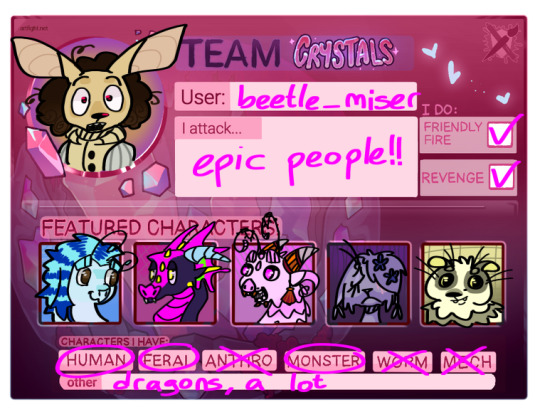Text


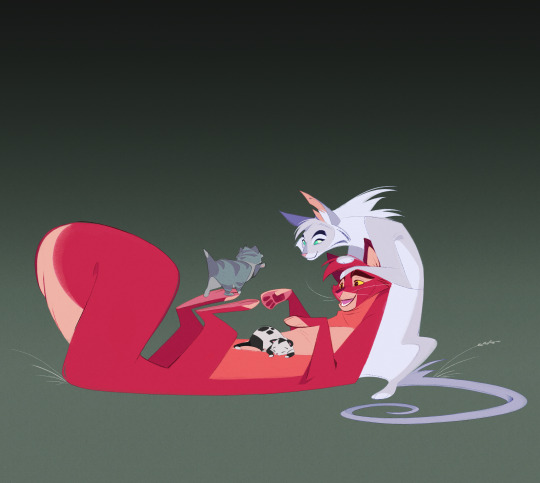
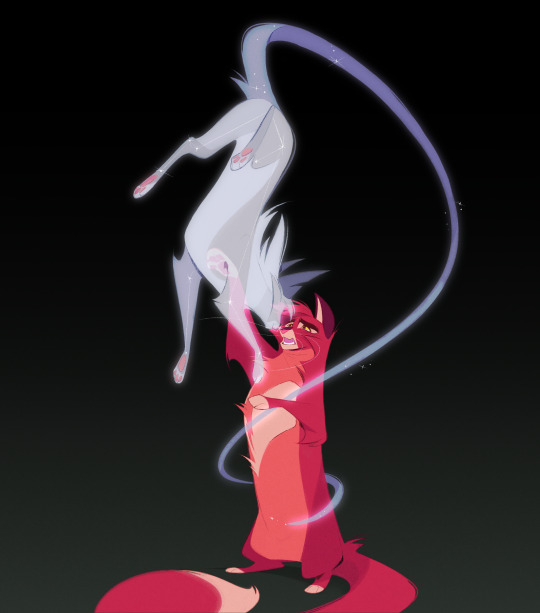
What's gonna be left of the world if you're not in it?
4K notes
·
View notes
Note
Hi? is it possible to get a higher res of the team templates for this year?

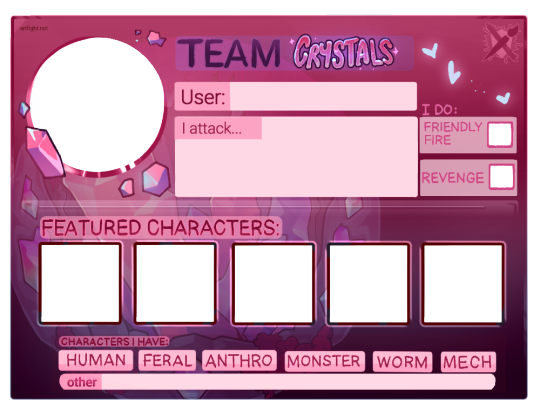
5K notes
·
View notes
Text
Here's a teaser to Darkstalker: Graphic Novel!



568 notes
·
View notes
Text

256 notes
·
View notes
Text
DELTARUNE ch.4 MINOR SPOILERS
this idea came to me in a dream

253 notes
·
View notes
Text
The style is so GOOD DUDDDDEEEEEE
Drawing every WoF character in a reverse alphabetical order: Whitespeck, another Whitespeck, Whiteout and Whirlpool

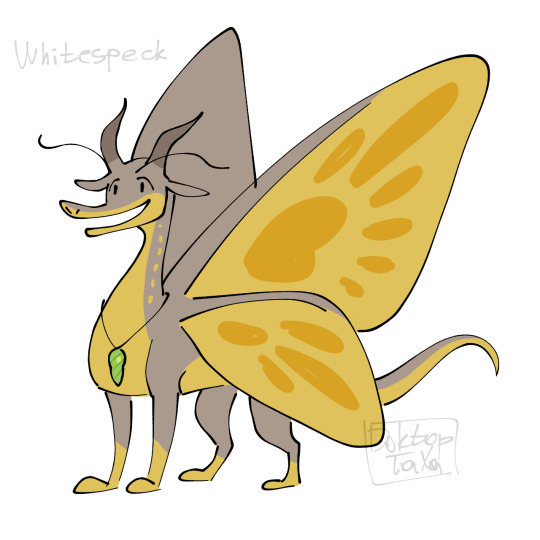


578 notes
·
View notes
Text
THE SUITS ARE SO COOL IM GONNA CRYYYYY 🫶🫶🫶🫶🫶🫶
Here's a video from today's FanWing Fest!
219 notes
·
View notes
Text
Tui has posted a sneak peak of the fanart book that'll be given at FanWing Fests!
instagram

80 notes
·
View notes
Text
AAAAAHHHHHHHHHHHHHHHHH BERYL!!!!!!!!!!
Here's the portion of The Hybrid Prince Tui read at the FanWing Fest!
#wings of fire#wingsoffire#wof#wings of fire news#wingsoffire news#wof news#news#verified news#event news#upcoming book news#fanwing fests#fanwing fest#fanwing fest 2025#fanwing fests 2025#the hybrid prince#the hybrid prince wingsoffire#the hybrid prince wof#the hybrid prince wings of fire
337 notes
·
View notes
Text
I LOVE THIS SM AAAAAAAAA
do we fw youtuber enasonas or nah

+ their individual halves!

37 notes
·
View notes
Note
oh i just LOVE your style!!!! if you wouldn't mind, could you explain how you go about designing and what your artistic process is with dragons specifically?? I love your lady jewel design the most!!!!!!
Of course, and thank you so much! @aldershadows also asked this question, and I hope I can give you a comprehensive answer, and will be taking this oppurtunity to create a one-and-done design tutorial to answer any similar questions that may come up in the future.
Bear in mind that I'm not a professional, and I'm not looking to dissuade people from following traditional techniques or other advice. This is purely a discussion of MY process, and what I consider to be good/bad design technique.
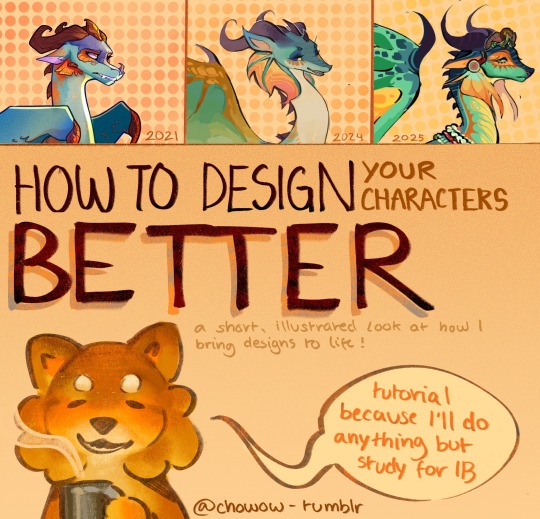
Where to Start
There are six important conceptual 'principles' I like to consider when in the initial stages of (Re)designing a character: Story, Personality, Aesthetic, Interpretation, and canon/fanon appearance. Fully understanding these principals can help you understand a character, which will make both your life and design better.

Story: What is this character's actual story? What's their lore? Where do they start, and where do they end up - and most importantly, where does your design fit into that timeline? When I design characters, I try to be clear on exactly what part of their journey they are on. (Ex: blaze and the coat -> sandwing succession war)
Personality: This one is pretty easy - what is your character like, and how do they present themselves to the outside world? When you make a character and show them to the world, everything in the canvas is interpreted by the audience: even down to simple details like posture or background. Treat it like an opportunity to show off as much of your character's personality as you can.
Aesthetic: Aesthetic plays the most important role of all: it's job is to make sure your design is cohesive. It can be a common theme, pattern, color pallet or shape - as long as it reoccurs throughout a design, it's good. Use aesthetics to amplify the other principals, and figure out how to make it *look* nice as a secondary goal.
Interpretation: This one is specific to redesigns, but could also be applied to OCs - I like to consider my personal interpretation of a character: the media I see, the opinion I have... Multi-animator projects, other fanart pieces and personal quirks make up my interpretation of most WoF characters. You don't always need to incorporate your interpretation, but it's good to have in mind.
Canon/Fanon appearances: If you want to design and OC, ignore this. If you're redesigning an existing character, it's useful to consider how your audience views them - for example, most of us collectively agree on a few key design aspects of most characters. That doesn't mean you have to follow those conventions, but keep in mind that they may make your character more or less recognizable. You can also call on the other principles of design to make up for any leap-of-faith redesign choices you make.

Narrow It Down
Now that you're thinking, it's time to narrow those ideas down! Be aware that sometimes, less is more: you might have a ton of cool concepts, but your design will look BAD if you can't stay cohesive. The number of different ideas that can co-exist in one design varies a lot by preference and similarity, so be evaluative when doing this. If you follow my blog, you might notice I tend to walk the line between detailed, cohesive design and overwhelming animator repellent. To combat this, I try to step back often and consider if I've gone too far.
At this stage, it's good to make notes or small sketches - anything to get your ideas down.

Experiment
Test your ideas out with more sketches - alter, add, subtract... whatever your heart desires. Experimentation is the best way to discover your specific design tendencies, as well as breaking new ground and stepping out of your comfort zone. The more you experiment, the quicker you'll improve. This is usually the point where I start testing out different patterns, since those are the main highlight of most of my redesigns. Pertaining to dragons, it's always a good idea to test out different shapes - especially wings, spikes, arms and tails, which are generally the most customizable features of a character. Looking to other artists for advice/inspiration is also a great tactic, but be sure to follow the 80/20 rule of originality within your designs!

Judge yourself (not literally)
Evaluating your designs as you make them is always a great idea, but sometimes you need multiple tests/sketches in order to know what you REALLY want. Compare your experiments - what do you like about them? What do you dislike? Which are more faithful to the character, and which ones confuse you? understanding the flaws in your design can help you to overcome even the biggest challenges.
I've used Kinkajou to show how important evaluation is: despite being my favorite character, she has proved exceedingly hard to redesign (to my satisfaction,) even with multiple attempts from this year and the last. She might not even be released by the time this post airs - but with the power of critical thinking and good evaluation, her design has gradually improved over my last few attempts.

Stay on your toes
Did you think you were done? Did you think it was over? NO. Life doesn't get easier just because you made it past the idea stage. When you have your final thoughts and want to get chugging with your reference page/illustration, make sure to stay alert! Keep evaluating, keep experimenting, and make sure to stay mindful of what you do! One of the more common issues I have is that I turn my brain off while I draw, and then slowly my designs drift further and further away from the idea I actually wanted to put down. Asking yourself questions along the way can help to sharpen your design, and train your mind to think more artistically.
It's always good to take a once-over of your final product: check for errors you might have made, and think about whether or not your design still looks good. Does it show personality? Is it consistent?
If you do find that your end product isn't what you really imagined, don't despair - there are plenty of lazy tricks you (And I) can pull to string things back together again. Using gradient maps is a great way to fix your colors, and simple filters like 'overlay' (procreate) can help to neutralize your pallet. My favorite trick is to use the 'curves' tool (procreate) to make certain colors darker, in the case that I feel my design doesn't use a wide enough range of light and dark shades. I also like to turn saturation down if I think there's a color problem, to see if it's actually my pallet or if I'm using too many colors with the same tone.

Keep Going
My design strategy relies on confidence. You won't be able to improve if you doubt that you can! So, my most important piece of advice is to keep going, no matter how fast or slow you seem to make progress. My second most important piece of advice is not to compare yourself to other artists - focusing on their progress is neglecting your own.
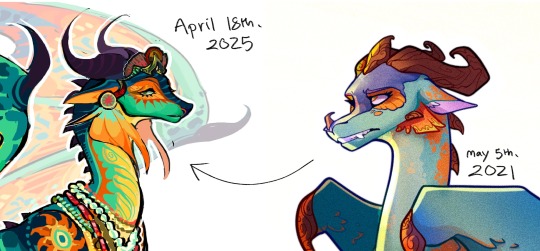
To everyone who made it this far, thank you so much! Posting here truly is an amazing experience and I adore you guys. Sorry if this got a little out of hand. I hope this was helpful to you and anyone else with the same question, as well as being a useful resource to other artists in the future! As always, my askbox is open to any and all questions + requests for redesigns!
( ´ ω ` )ノ゙
448 notes
·
View notes
Text
FFFFIREEEEEEE 💥💥💥💥💥🔥🔥🔥🔥🔥

I'LL SHOW YOU DIVINE JUSTICE 🪙
23 notes
·
View notes

